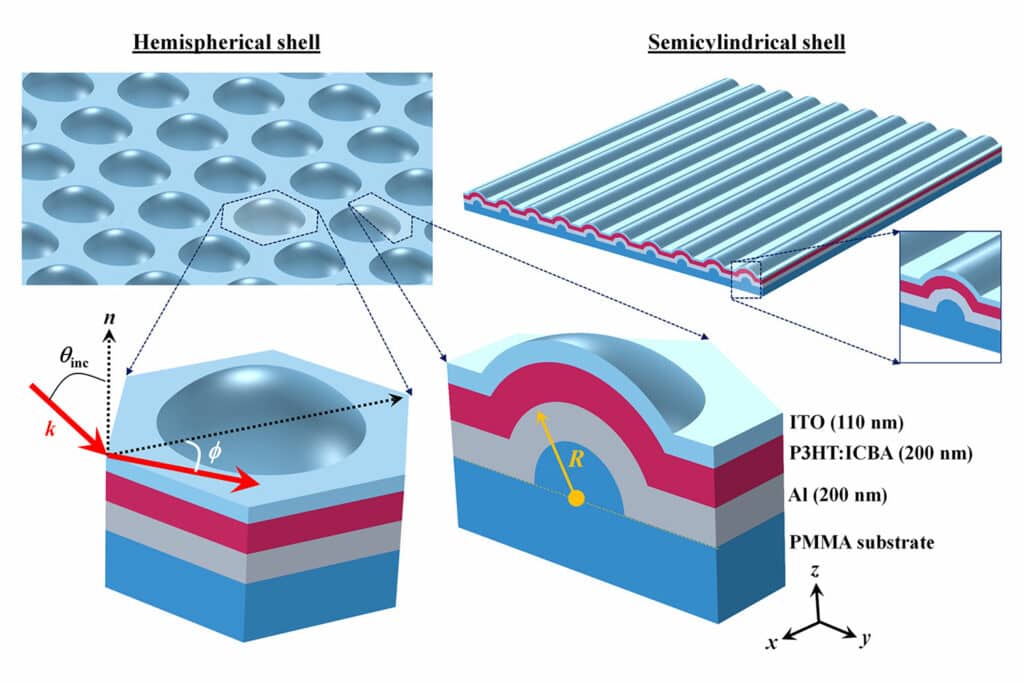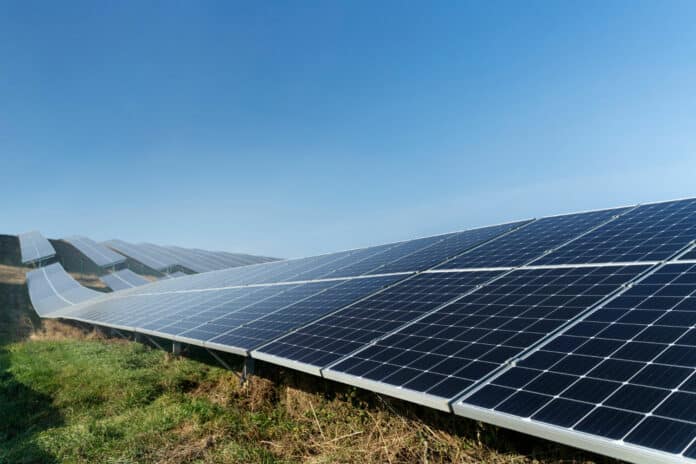In recent years, solar energy technologies have made significant progress with advancements in various aspects, such as materials, devices, circuits, storage, and systems, which are crucial for addressing the current energy challenges.
Organic photovoltaic cells have emerged as a promising alternative to traditional silicon-based counterparts due to their flexibility and cost-effectiveness. However, optimizing their performance is still a challenge.
A pioneering study by Abdullah Gül University in Turkey proposes a hemispherical shell-shaped design for organic photovoltaic cells to unlock their full potential in light absorption and angular coverage. This innovative configuration aims to maximize light absorption and angular coverage, promising to redefine the landscape of renewable energy technologies.
The study reported in the Journal of Photonics for Energy (JPE) presents advanced computational analysis and comparative benchmarks to highlight the remarkable capabilities of this new design.
Solar cells are typically flat to increase their exposure to sunlight, although they are tilted between 15 and 40 degrees to optimize their performance. Scientists have experimented with different shapes for the surface of solar cells, such as incorporating spherical nanoshells to increase energy capture.
For the new study, scientists at Abdullah Gül University in Türkiye conducted simulations to see how dome-shaped bumps could enhance organic solar surfaces.
The team studied photovoltaic cells made with an organic polymer called P3HT: ICBA as the active layer, above a layer of aluminum and a substrate of PMMA, capped off with a transparent protective layer of indium tin oxide (ITO). They conducted a 3D finite element analysis (FEA), which breaks down the elements of a complex system into manageable chunks to better simulate and analyze the sandwich structure of the cells under various conditions.

The results obtained from the Finite Element Analysis are truly impressive. Compared to flat-structured devices, the hemispherical shell structure displayed a remarkable 66% increase in light absorption when exposed to transverse electric (TE)-polarized light. Similarly, a significant 36% improvement was observed for transverse magnetic (TM)-polarized light.
The hemispherical shell structure outperformed previously reported semicylindrical shell designs by a significant margin, showcasing a 13% increase in light absorption for TE polarization and an impressive 21% improvement for TM polarization.
The hemispherical shell structure seems to have exceptional absorption capabilities and offers wide angular coverage for both TE polarization and TM polarization. The angular coverage of the proposed structure is improved as well, reaching up to 81 degrees for TE polarization and 82 degrees for TM polarization. This becomes quite useful for applications requiring flexible light capture, such as wearable electronics.
This innovation in organic solar cell design is a significant step towards a brighter and more sustainable future powered by renewable energy by harnessing the power of finite element analysis and structural engineering.
“With the improved absorption and omnidirectionality characteristics, the proposed hemispherical-shell-shaped active layers will be found beneficial in various application areas of organic solar cells, such as biomedical devices, as well as applications such as power-generation windows and greenhouses, internet-of-things, and so on,” said Professor Dooyoung Hah of Abdullah Gül University.
Journal reference:
- Dooyoung Hah. Hemispherical-shell-shaped organic photovoltaic cells for absorption enhancement and improved angular coverage. Journal of Photonics for Energy, 2024; DOI: 10.1117/1.JPE.14.018501
